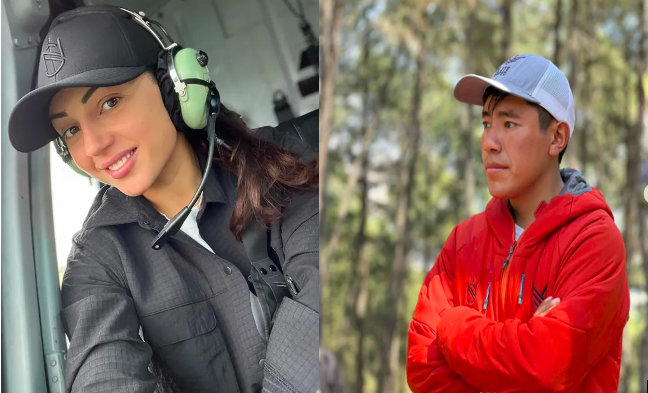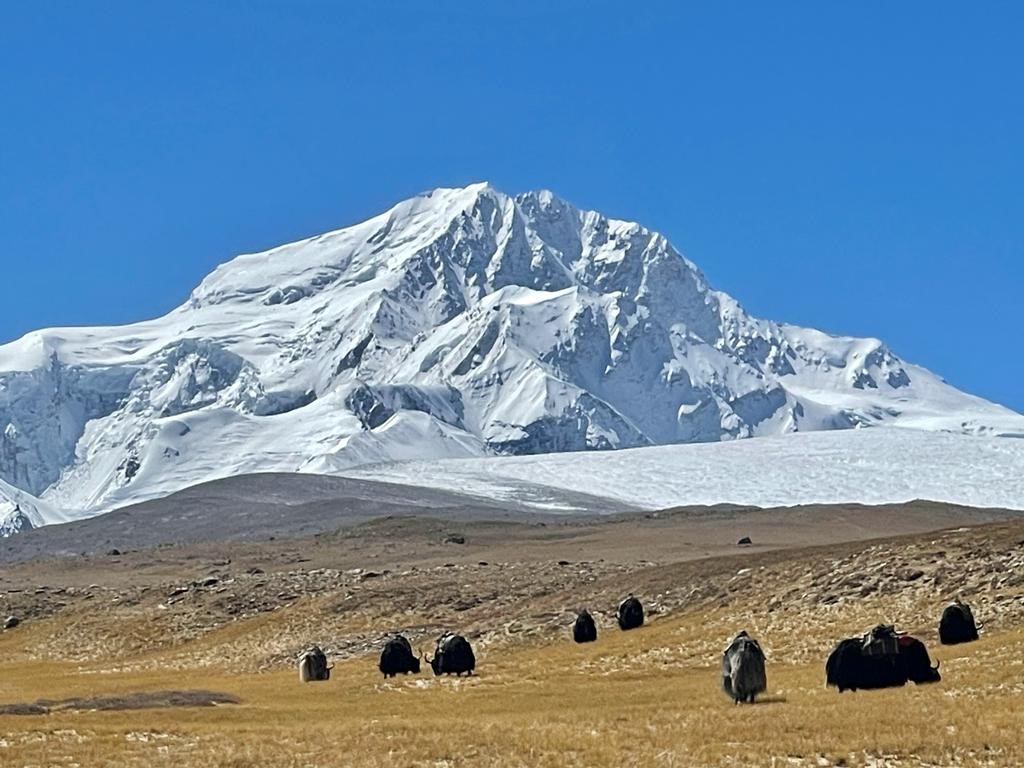Jedi Mind Tricks
Jedi Mind Tricks
These are not the droids you are looking for.
I wrote a blog on Monday about Anna Gutu and her guide, Mingmar Sherpa and their deaths on Shishapangma. Since I wrote it, some things have changed, and it’s a fascinating insight into media manipulation, transparency and truth.

Anna’s Instagram account has been altered. The images that I briefly skimmed have been curated – the ‘party girl’ pictures are mostly gone. The pouting, the mini skirts and heels removed and replaced with masses more mountaineering images and pictures of her travels. Some of the ‘inspirational quotes’ are no more. It is a subtle shift, but presents an entirely different image of her.
I wouldn’t have been aware that this had happened, were it not for a random person (or troll) on Twitter challenging my view of Anna. His comments made me feel guilty for mis-representing this young woman, who, he told me was loving, kind and an ‘exceptional athlete’. I re-visited the account, to find a different woman represented.
Similarly with her guide Mingmar Sherpa’s account. When I first wrote the blog, I went to his Instagram account where I read his post after summiting Cho Oyu. He wrote a comment about his enormous doubts about completing that climb, due to his fear of avalanches. He said he wanted to turn back, but that the military discipline of Nimsdai and one of the other sherpas helped to change his mind, and they made the summit anyway. He said something about karma – a reference to his concern that karma might be preventing them from achieving this summit. And that he was happy to have been proven wrong.
I read that post, and it felt incredibly poignant that he had lost his life in an avalanche just days later, pushing to the final summit, when many other experienced climbers on Shishapangma had turned back.
These things that I read and saw are now gone. I have just read Nimsdai’s heartbreaking post about the loss of Anna Gutu and Mingmar Sherpa, and had this extraordinary feeling of two realities colliding in front of me.
These, say the PR companies, are not the droids you are looking for. My perception is no longer real. The focus is on the loss of two wonderful human beings. The wider implications are off the table. How can you have a discussion about the impact of people racing to tick off summits in the Death Zone, when there is so much sadness and suffering? And anyway – where is your evidence on which you base your views? Where is the post that shows clearly Mingmar’s deep doubts about chasing the peak of Cho Oyu when he was scared of being buried in an avalanche? His experience told him to go back, but he was persuaded by his team-mates to ignore his sense of foreboding, and he was relieved and delighted to have been proved wrong.
I read that post. I didn’t make it up. But I can’t prove it to anyone. I can’t even remember it that clearly. I doubted myself to the extent that I wondered if I had been reading a post on a different Mingmar Sherpa’s Instagram account (the name is common and has several different spellings – including Migma and Migmar). I don’t know now. My critical analytical mind is left spinning. What did I actually read? Was it even real?
I added a postscript to my last blog, including an excellent article by Angela Benevides based on the comments from other climbers leaving the mountain, and including quotes from two experienced mountaineers regarding the summit fever that they believe led to the deaths that day. Anna and Mingmar were not the only climbers to die there. Gina Rzucidio, the other American female aiming to be the first to get ’14 summits over 8,000m’ and her guide, Tenjen Lama were killed in a second avalanche just 30 mins afterwards. Another guide, Mingma G, nearly lost his life in rescuing another mountaineer.

This is a quote from that article: ‘… climbers are starting to reveal what they went through during the tragic summit push last Saturday. They tell a story of toxic competition and disastrous consequences.
“Was a horrible expedition, I didn’t expect it would turn out like that,” Mingma G, leader of the Imagine Nepal team, admitted to ExplorersWeb on his way to hospital. “Everything was going smoothly, but the competition between the two ladies ruined everything.” ‘
I can only hope that this article and Mingma’s quote remain in place and isn’t whitewashed along with the rest of the characters in this scene.
In 1984, when I was just 13, my dad made me read George Orwell’s ‘1984’. It was written in 1949, and was already incredibly old fashioned and hard to read for a teenager in the 80s. But it had an enormous impact on me. It was the stuff of nightmares – this society in which one man spends the entire story trying to maintain his individuality and identity in the face of relentless thought police and psychological oppression. It was nothing short of devastating at that young age, to read about a protagonist whose efforts at resistance were finally overcome, and Winston Smith became the obedient clone who gave his girlfriend up for torture and finally achieved peace in loving Big Brother.
I only have a dim memory of the book now, and I often conflate it in my mind with Huxley’s dystopian 'Brave New World', whose messages were similar: the power structures will always try to numb your mind. Totalitarianism is subtle, clever and pervades and manipulates the most determinedly strong minds. My parents clearly wanted us to grow up with strong minds. They focused on education. Intellect was prized above all else in our household.
Bizarrely, though, in spite of those aspirations he nurtured in his children, my dad created a totalitarian state in our home. I was brought up with this dichotomy of the expansion of my mind – encouraged to challenge the status quo, to learn about, analyse and criticise the world around me, while being locked in a torture chamber of fear and oppression. My dad was controlling and intermittently violent. We lived in fear of his temper and he was the dictator of our entire existence. What extraordinary gymnastics my mind must have had to perform to be able to keep hold of the deep belief that I must not be like Winston Smith, that I must use my strength of mind to keep hold of my identity.
My childhood abuse is another matter, which I will probably revisit at some point. But the thing is, mind manipulation is something that exists everywhere. ‘These are not the droids you are looking for’ say the PR companies, the trolls and the bots. It’s no wonder conspiracy theories abound – how much easier it would be to believe that there is some cabal of clever, evil geniuses controlling the narrative and pacifying us with the recreational drugs of consumerism and cat memes. We are programmed to look for patterns, for reasons, for simple explanations behind highly complex situations.
The deaths on Shishapangma and the media manipulation in its aftermath are an example of the whitewashing that goes on everywhere. Your information streams are being adjusted and manipulated constantly. You read something, form an opinion, make sense of what you see, and then it turns out to be a chimera.
I hate to say it, but Big Brother is real. It’s not one government, not one cabal. It is the inevitable result of a pointy, elitist system. You have money, you can manipulate other people. You make them believe you, you have power and with power comes more money. Social media is an exceptional window into how we curate our lives. Each of us has many layers, and you can choose to portray any of those online. Think too hard about that and you will have an existential crisis. I had one of those when I was a teen (reading too much Camus, Kafka and Sartre) and another one earlier this year. That’s another story I will go into at some point…
I had no idea that this story would trigger such thoughts on mind manipulation. That my musings on the way that mountains are just another thing for the rich and frivolous to conquer has turned into something quite different. The ‘rich party girl’ that I lightly disparaged was, of course, many other things. According to those who knew her, she was a loving and kind human being, she donated money to a Nepalese charity, she brought happiness to others’ lives and was a positive soul. It is good to see her like that. But I don’t want to lose sight of the first impression. The way she represented herself to the world prior to her untimely death was arguably a more genuine version of who she was and how she engaged with the world. You can be all those lovely things and still be a shameless self-promoter, an inexperienced climber whose goal to be ‘the first’ arguably resulted in a toxic race that contributed the death of herself and her guide.
